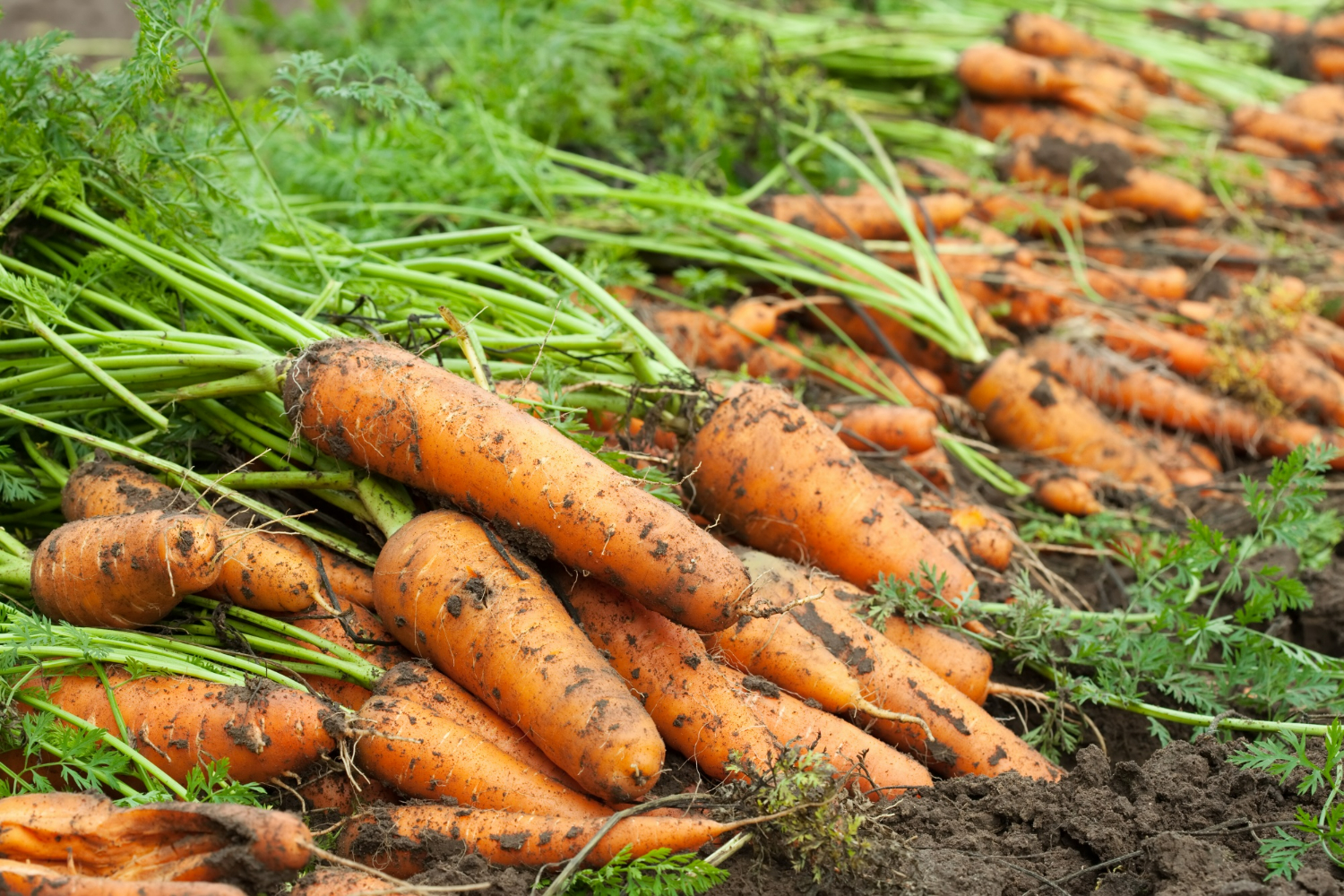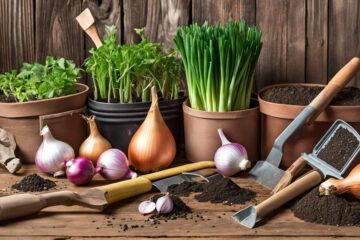If you’re looking to grow carrots in your home garden, it’s like starting on a journey where you’re the architect of your own crunchy orange delights.
The secrets to successfully nurturing this root vegetable lie in the details that will guarantee a fruitful harvest. From selecting the right carrot varieties to mastering soil preparation and watering techniques, each step plays a vital role in the growth process.
As you delve into the world of home gardening, you’ll unravel the mysteries of cultivating carrots and witness the magic of transforming tiny seeds into vibrant produce.
Carrot Varieties
When selecting carrot varieties for your home garden, it’s essential to explore the vast array of options available, spanning an impressive spectrum of colors, flavors, textures, and sizes. This diversity allows gardeners to tailor their carrot crops to specific culinary preferences and gardening goals. Beyond the classic orange, carrots can be found in an array of vivid colors including vibrant purple, crisp white, and even exotic rainbow-colored varieties, adding a visually stunning element to both your garden and plate.
Each carrot variety brings its own unique set of characteristics. For instance, purple carrots often offer an earthy flavor with hints of sweetness, while white varieties can provide a slightly peppery taste. The texture of carrots also varies significantly across different types; tender baby carrots are perfect for fresh eating, whereas robust and crunchy varieties, such as the Imperator, are ideal for roasting or juicing, providing a satisfying bite.
Moreover, the size of the carrot plays a crucial role in its use; smaller varieties are great for snacking or pickling, while larger ones are best suited for cooking or juicing. This broad range of choices ensures that there’s a carrot variety to suit every taste and purpose, making the selection process an exciting part of gardening. By considering these aspects, gardeners can select varieties that best fit their culinary needs and gardening conditions, leading to a rewarding and flavorful harvest.
Soil Preparation
Proper soil preparation is the cornerstone of successful carrot cultivation, setting the foundation for healthy and vibrant crops. Given the array of carrot varieties available, understanding and executing the right soil preparation techniques are crucial for your gardening success. The process begins with choosing the right soil. Carrots demand a loose and well-draining soil medium to facilitate easy root penetration and prevent waterlogging, which could lead to root rot. Sandy loam or loamy sand soils are often considered ideal for this purpose as they offer the perfect balance between moisture retention and drainage.
Clearing the soil of rocks, hard clumps, and debris is a critical next step. Carrot roots can be obstructed or misshapen by any impediments in the soil, resulting in crooked or forked carrots. A smooth, unobstructed soil bed allows for straight root growth.
Boosting soil fertility through the incorporation of organic matter cannot be overstated. Well-aged compost or manure enriches the soil with essential nutrients and improves its structure and aeration, creating an environment conducive to carrot root development. This organic matter not only feeds the soil but also enhances its moisture retention capabilities without compromising drainage.
Lastly, the soil’s pH level plays a significant role in carrot growth. Carrots thrive in a slightly acidic to neutral pH range of 6.0 to 6.8. Testing your soil’s pH and adjusting it if necessary can ensure the availability of essential nutrients, significantly impacting carrot health and flavor. Lime can be added to increase pH, while sulfur can lower it to achieve the desired range.
By meticulously preparing your soil with these considerations in mind, you not only optimize conditions for carrot growth but also enhance the overall health and productivity of your garden. This preparatory work lays a strong foundation for the successful cultivation of carrots, leading to a fruitful and satisfying harvest.
Planting and Spacing
Achieving a successful carrot harvest begins with meticulous attention to the planting process, particularly regarding seed depth, spacing, and row configuration. Proper planting ensures that each carrot has sufficient space to grow, access to nutrients, and the ideal conditions for developing healthy, straight roots.
Start by planting carrot seeds 1/4 to 1/2 inch deep in the soil. This depth is crucial as it provides the seeds with enough coverage to protect them from the elements while ensuring they’re not so deep that they struggle to germinate. The soil should be loose and fertile, with a pH level between 6.0 and 6.8, to foster optimal growth conditions from the get-go.
Spacing is a key factor that cannot be overlooked. Seeds should be sown approximately 2 inches apart within rows. This spacing is strategic, allowing each carrot sufficient room to develop without competition for resources, which can lead to overcrowding and underdeveloped roots. The rows themselves should be spaced 12-18 inches apart. This wider row spacing facilitates good air circulation, reduces the risk of fungal diseases, and makes it easier to water, weed, and harvest the carrots.
Hand-planting the seeds allows for greater control over their placement and depth. After sowing, gently cover the seeds with soil, ensuring they remain at the correct depth without being compacted, which could hinder their ability to break through the soil surface.
Moreover, planning your garden layout with evenly spaced rows not only contributes to a healthier carrot crop but also simplifies garden maintenance. It enables easier access for watering, weeding, and monitoring the plants’ growth. Uniform row spacing also assists in preventing the spread of pests and diseases by facilitating good hygiene practices within the garden.Adhering to these planting and spacing guidelines is a simple yet effective way to optimize your carrot crop’s potential. Taking the time to carefully plant your carrot seeds with the proper depth and spacing sets the stage for a thriving garden. As your carrots grow, you’ll find that these initial efforts pay off with a harvest that is both plentiful and satisfying, showcasing the beauty of well-tended produce from your own backyard.
Watering Tips to Grow Carrots
Water management is a critical aspect of growing carrots, as they require consistent moisture levels in the soil for optimal growth and root development. By adhering to a few key watering principles, you can ensure your carrot plants thrive throughout the growing season.
Ensure Adequate Weekly Watering
Carrots benefit significantly from a consistent watering schedule that provides approximately 1 inch of water per week. This consistent moisture level is crucial for maintaining an evenly moist soil environment, which supports uniform carrot growth. Avoid over-watering, as waterlogged soil can lead to root diseases and negatively affect carrot quality. Using a rain gauge or a simple measuring tool can help you keep track of how much water your garden receives, both from rainfall and manual watering, allowing you to adjust as necessary.
Practice Deep Watering Techniques
Deep watering plays a pivotal role in encouraging carrot roots to extend deeply into the soil, fostering robust and healthy root systems. Aim to water your carrots in a way that moistens the soil to a depth of 6-8 inches, promoting root growth downwards rather than spreading out at the surface. This method not only supports the development of longer carrots but also makes the plants more resilient to fluctuations in soil moisture levels.
Utilize Mulch to Conserve Moisture
Applying a layer of organic mulch around your carrot plants is an effective strategy to maintain soil moisture and temperature. Mulch acts as a barrier to moisture evaporation, allowing the soil to stay moist longer between waterings. It also helps regulate soil temperature, protecting the roots from extreme heat. Organic mulches, such as straw or grass clippings, have the added benefit of gradually breaking down into the soil, improving its structure and nutrient content. Remember to keep the mulch a few inches away from the plant bases to prevent any potential rot issues.
By implementing these watering tips, you not only ensure that your carrots receive the moisture they need but also create an environment conducive to their growth. Regular, deep watering and the use of mulch can significantly impact the success of your carrot crop, leading to a plentiful harvest of crunchy, flavorful carrots from your home garden.
Harvesting and Storage
To guarantee peak freshness and storage of your homegrown carrots, it’s important to harvest them when they reach about 1/2 inch in diameter or as wide as your thumb. Use a digging fork to gently loosen the soil and pull up the carrots carefully to avoid damage.
After harvesting, wash the carrots thoroughly to remove any dirt. For peak freshness, store the carrots in a cool environment at around 32°F with 95% humidity.
If you plan to overwinter your carrots, consider leaving them in the garden under a layer of mulch to protect them from harsh weather conditions. Alternatively, store them in moist sand in a cool cellar.
Be cautious not to store carrots near apples or pears as the ethylene gas emitted by these fruits can cause the carrots to spoil quickly. By following these simple steps for harvesting and storage, you can enjoy your homegrown carrots for an extended period.
Frequently Asked Questions
What Is the Trick to Planting Carrots?
Planting carrots successfully requires sowing seeds in loose, fertile soil at the right depth. Make sure proper spacing, keep the soil moist, and consider companion planting. By following these steps, you can enjoy a bountiful harvest of homegrown carrots.
What Month Do You Plant Carrots?
In early spring, you plant carrots to enjoy a fall harvest. Start about 2-3 weeks before the last frost date for lush, homegrown goodness. Keep the soil temperature cozy between 45-85°F for peak growth.
Do Carrots Like Full Sun or Shade?
Carrots love full sun! They thrive with 6-8 hours of sunlight daily, leading to straight, sweet roots. Shade can stunt growth and alter root shape. Make sure your carrots get that sunshine for a bountiful harvest.
Are Carrots Easy to Grow in a Garden?
Carrots are easy to grow in a garden. With proper care and attention, you can enjoy a bountiful harvest of homegrown carrots. They prefer sunny spots and well-drained soil, making them a great addition to your garden.
Conclusion
Now that you’ve learned the ropes of growing carrots in your home garden, it’s time to watch your efforts bloom like a rainbow of crunchy delights in your backyard.
Embrace the thrill of nurturing your carrot seeds into vibrant orange treasures that will fill your heart with joy and your plate with goodness.
Get ready to savor the fruits of your labor and bask in the satisfaction of harvesting your own homegrown carrots.





